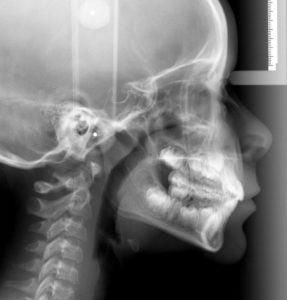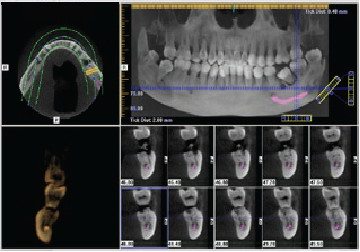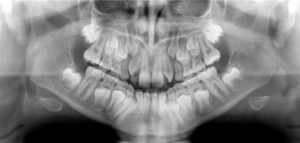
The Vignato dental Clinic is specialized in the care and prevention of oral pathologies.
It is provided with two operating rooms for advanced surgery and with a center for children´s care Centro Ortodontico Vicentino.
The first dental appointment is the most important moment for the patient to know his/her conditions of oral health or to solve a problem. It can also occur during the oral hygiene session or in case of an orthodontic urgency.
To request your first visit you can fill out the form on our site and you will be contacted, or by telephone, calling the number 0444.302284. Our secretaries will be happy to answer your call.
Their task is to recognize the importance of your requests and verify the availability on the agenda in order to find a solution to your problem.
They are also the first people you will meet when entering the waiting room and they will help you to complete the medical history.
They are responsible for the management of appointments and accounting.
The dental assistant is the second person you will meet inside the clinic. Our assistants are all graduated health workers and expert in all first aid operations. Their task is to provide assistance to the dentist and the patient, in order to perform the work in a successful way.
Doctors Costantino and Giuseppe Vignato are the managers of the Vignato dental Clinic, as well as doctor Leonella Caliari for the fields of orthodontics and pediatric dentistry. Their task is to carry out the first appointment and express a diagnosis. This is the ability to recognize a pathology by its signs. It is the starting point which will lead your mouth from a state of need to a well-being one.
A correct diagnosis is fundamental to express an accurate estimate and give a right sequence of appointments.
Doctors Costantino, Giuseppe and Leonella form, together with their coworkers, the Vignato team.
Coworkers are all specialized in different orthodontic disciplines and have been selected in time by the Vignato dental Clinic in order to offer a high quality service. They are all trusted people who, like us, respect the Ethic code of the Vignato dental Clinic.
We recommend you bring all the documentation you already have: endoral X-rays, panorex, tele X-rays, CATs, MRI scans and medical reports of previous specialized appointments.




Your medical history form is fundamental to have an overall view of your health conditions.
You will have to fill it out upon your arrival.
It has to be updated periodically which means that, in case of relevant variations regarding your health conditions, you will be asked to make the necessary changes.
It is important to inform us on your medications, allergies, pathologies, pregnancy and degree of anxiety.
Through this form, the patient declares to be aware of the entity of the intervention, which he/she will face and gives his/her consent to the dentist in order to proceed.
It is not an act of faith, rather a statement that you agree on and understand what we will perform in your mouth.
The endoral X-rays of our dental clinic are in digital form.
Because of their extremely low level of radiations, they enable us to see on the screen all the main details to express a diagnosis. They also represent an essential tool in case of orthodontic urgency.
They enable us to visualize in detail the anatomy of 3-4 teeth in their constitutive parts (crown, root, gum tissues).

Any surgical intervention in the oral cavity produces a series of reactions, which should be monitored for a rapid recovery.
Normal reactions can be: a moderate swelling of the tissues near the intervention site, slight heat increases and the appearance of hematomas the days after the operation.
In order to reduce these symptoms, here are some suggestions to follow:
Pre-surgical indications:
– start taking the prescribed antibiotic on the night before the intervention
Post-surgical indications:
– take antibiotics for at least 5 days every 12 hours
– take painkillers according to indications given by the specialist
– put ice for at least 2 hours on the day of the intervention
– use mouthwash containing 0,2% of chlorhexidine for 2-3 times a day and rinse gently
– do not take acetylsalicycilic acid (aspirin)
– if the intervention was done on the upper arch, blow your nose gently for a week and sneeze with your mouth open
– in case of bleed, apply humid gauzes
– remove the periodontal pack after 3 days
– sleep with one or two pillows in order to keep the head up and lay on the non- operated side
Other post-surgical indications on the life style:
– moderate physical efforts and avoid practicing sports for a few days
– chew on the opposite side of the intervention
– eat soft and lukewarm food
– do not use a toothbrush and/or a gum cleaner in the area of the intervention
– do not smoke
Patients under medication are invited to inform us, in order to avoid side effects due to assumption of antibiotics or painkillers. For further information, please contact us.
The right moment to take your child to the pediatric dentist and to the orthodontist is once all baby teeth have erupted.
This is usually around the age of 2-3.
During the very first appointment, the dentist evaluates the health conditions of the mouth, checks if all baby teeth are out and healthy and if occlusion, meaning the closure between arches, is correct.
He/she then explains to the parents the fundamental principles for a correct oral hygiene and prevention methods.
At this time, there is also a check up on possible bad habits, such as the use of pacifier and thumb sucking, which can alterate the optimal development of the mouth.
Our sterilization procedure of environments and medical instruments in order to guarantee the control of infections, the Vignato dental Clinic constantly carries out a sterilization of all medical instruments used and work environments. Moreover, the non-contaminated disposable material is regularly separated into specific containers.
Sterilization of medical instruments
The sterilization cycle starts in the working rooms, where the material used is divided into: disposable to differentiate; dirty disposable of organic material which has to be thrown in containers for special waste; dirty instruments to be transferred into specific containers which are kept in the sterilization area.
The sterilization room of the Dentisti Vignato Clinic is divided into two areas: one for clean instruments and one for dirty ones. The two areas are defined “dirty” and “clean” and do not enable dirty instruments to contaminate sterilized ones.
The first step is called sanitization and begins by washing instruments in an ultrasonic tank.
They are then transferred in a specific 95 degree thermal disinfector.
At this point, instruments can go in the clean area and, after a quality control, can be thermally sealed in specific sterilization packages.
The outside of each package presents specific chemical indicators which change color only if the cycle in the autoclave (pressure chamber) has been completed and done at the right temperature. Each package is labelled with date, batch number and name of the person who wrapped it and is then put inside the autoclave for the sterilization cycle.
The autoclave works by changing the atmospheric pressure and the temperature inside the retaining room. We can be sure that instruments are completely sterilized only if we respect certain parameters. Each autoclave is constantly monitored by specific safety systems which point out any possible operation anomalies, and all sterilization cycles are recorded and saved on memory catalogues which enable their periodic check. Our 6 autoclaves are submitted to the Bowie Dick test every day. This test evaluates the ability of air removal and steam penetration in the load compartment.
In order to verify the real ability of autoclaves in eliminating all bacteria and viruses, every week we do a test with biological indicators of sterilization. All sterilized material is kept in special shelves until it is being used. This cannot go beyond 30 days.
Sterilization of operating rooms
Operating rooms, as well as work surfaces, require to be constantly cleaned and checked with specific sterilization products.
The contamination between one patient and the other is still today the most difficult challenge to face for dental offices.
The procedure requires the cleaning of walls and floors done by specialised cleaning companies during the night. Work surfaces and armchairs must be sterilized from one patient to the other. All removable pieces must be removed and wiped with special products and all surfaces must be sprayed. The product should act for at least 10 minutes.
This is the reason for double armchairs, since it takes time for an orthodontic room to be once again sterilized.
As far as operating rooms, the procedure is similar, but these environments must be sterilized with instruments which act for 24 hours.
Moreover, operating rooms are equipped with a filter area which reduces the direct contact between outside and inside and also have a system of air purification and renewal.
Due realtà che operano da oltre 30 anni fianco a fianco per la salute orale di adulti e bambini.
Tel. 0444302284 – 0444300347
Contrà Torretti 54
P. IVA e C.F. 02479380244
Aut. Sanitaria n° PGN192722
Contrà Torretti 54
P. IVA e C.F. 03314160247
Aut. Sanitaria n° PGN192716